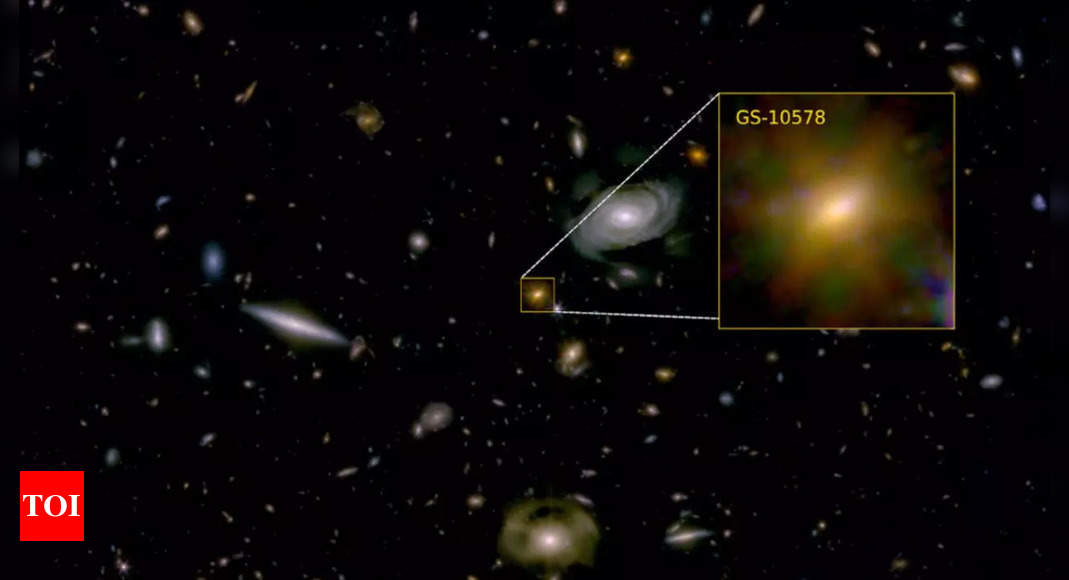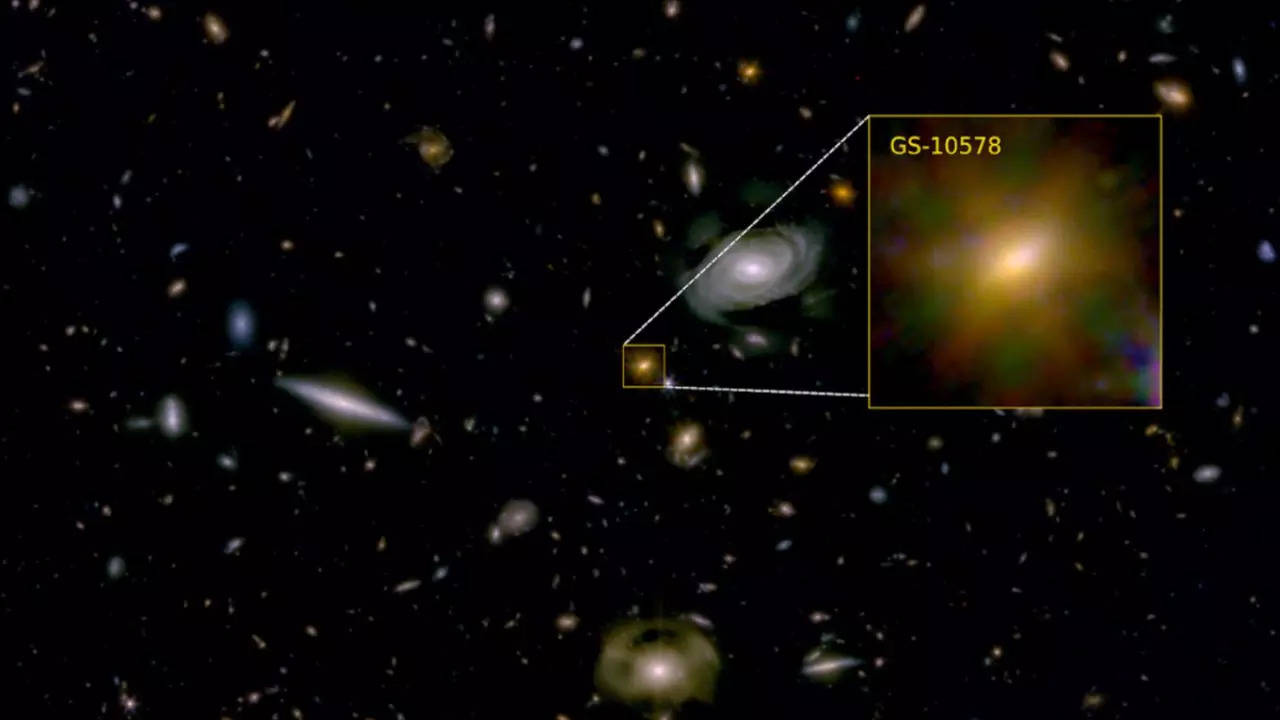This groundbreaking discovery was made by an international team of researchers, co-led by the University of Cambridge, and marks a significant advancement in understanding the complex relationship between black holes and galaxy evolution.
The team has been studying a distant galaxy, informally named “Pablo’s Galaxy,” which existed around two million years after the Big Bang. By observing the interactions within this early galaxy, researchers have uncovered how black holes can effectively halt star formation by cutting off essential fuel, offering key insights into the mechanisms that govern the formation and development of galaxies in the universe.
James Webb Space Telescope discovers Pablo’s galaxy
Pablo’s galaxy, roughly the size of the Milky Way, is in a ‘quenched’ state, meaning that it has largely ceased star formation. Webb’s advanced sensitivity allowed researchers to detect substantial amounts of gas being expelled from the galaxy at velocities of around 1,000 kilometres per second—fast enough to escape its gravitational pull.
The study uncovered a previously unobserved wind component consisting of colder, denser gas clouds. These clouds do not emit light but block light from galaxies situated behind them.
The amount of gas being expelled is greater than what would be needed for ongoing star formation, effectively starving the galaxy of the essential material required to create new stars.
Insights into black hole-galaxy interaction
According to an India Today report, Dr. Francesco D’Eugenio from Cambridge’s Kavli Institute for Cosmology remarked that the black hole is effectively “killing this galaxy and keeping it dormant by cutting off the source of ‘food’ the galaxy needs to form new stars.”
This finding corroborates earlier theoretical models predicting the influence of black holes on their host galaxies. Contrary to expectations of chaotic and turbulent effects, the stars within this disc-shaped galaxy continue to move in an orderly manner.
Professor Roberto Maiolino, also from the Kavli Institute, highlighted the importance of the Webb Telescope in this research: “We knew that black holes have a massive impact on galaxies, and perhaps it’s common that they stop star formation, but until Webb, we weren’t able to directly confirm this.”
Implications for black hole galaxy evolution
Published in Nature Astronomy, these findings offer crucial insights into galaxy evolution and the role of supermassive black holes in shaping the cosmos. Further observations are planned using the Atacama Large Millimetre-Submillimetre Array (ALMA) to investigate any remaining fuel for star formation in this galaxy and to explore the black hole’s effects on its surrounding region.
Also read: The hidden dangers of spacewalks: Why every mission is a high-stakes adventure

